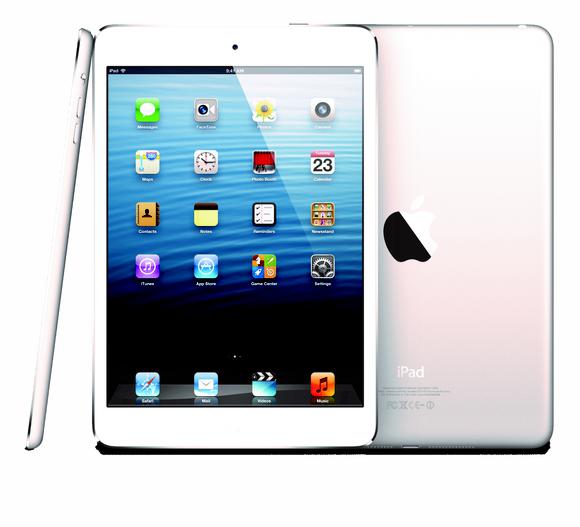
However, while the iPad has solid growth prospects, the iPhone will still be the primary driver of future revenue and profit growth for Apple. The need to partner with wireless carriers to drive iPhone sales has resulted in lumpy growth, but it also means that there is a significant unaddressed market for the iPhone. Moreover, the iPad Mini was recently released as an entry-level tablet, and Apple Inc. (NASDAQ:AAPL) is likely to introduce a similarly cheap iPhone in the next year or so. In fact, iPad growth may already be close to its peak; by contrast, iPhone unit growth is likely to reaccelerate when Apple adds new carrier partners and/or creates a cheaper phone. This ensures that the iPhone will remain the top dog for Apple Inc. (NASDAQ:AAPL).
The argument
Manjoo’s argument is fairly simple. First, he states that the iPad has already hit an affordable price point with the $329 iPad Mini. While Google Inc (NASDAQ:GOOG)‘s Nexus 7 and Amazon.com, Inc. (NASDAQ:AMZN)‘s Kindle Fire are significantly cheaper, Manjoo points out that Apple Inc. (NASDAQ:AAPL) has 350,000 apps customized for the iPad, leaving Android tablets in the dust. Manjoo argues that this large app ecosystem locks in customers and developers; customers will want to keep buying iPads so they can keep their apps, and the large base of app-hungry users will encourage developers to focus primarily on iOS.

The iPad Mini. Source: Apple.
Manjoo also notes that Apple’s iPad sales grew 65% last quarter, while iPhone sales grew just 7%. He notes that if that pace continues, iPad could overtake iPhone as Apple’s best-selling product by 2015. Manjoo also points to IDC’s five-year outlook, which shows the iPad having 46% of the market in 2013, and 43.5% in 2017. All in all, Manjoo believes that the iPad’s strong positioning in the tablet market provides a long runway for growth.
iPhone is still king
The first apparent flaw in this analysis stems from the fact that, despite the iPad’s recent growth, Apple Inc. (NASDAQ:AAPL) sells many more iPhones than iPads at present. Even after iPad unit sales grew 65% last quarter, it was still outsold nearly two-to-one by the iPhone. iPad’s growth in 2013 is coming off of a base of 58 million units sold in the most recent fiscal year; however, it is important to remember that the iPhone generated 73% unit growth just last year, growing from a little more than 72 million unit sales in FY11 to 125 million in FY12.
In other words, it is relatively easy to generate impressive percentage growth up to a point. Eventually the market becomes saturated, though, and growth tends to hit a wall. This trajectory is reflected in the IDC numbers Manjoo cites, insofar as IDC projects a compound annual growth rate of just 15% for the iPad over the next five years. At that pace, the iPad would not even hit today’s iPhone sales rate at the end of the forecast period.
iPhone will remain king
While the iPad’s growth is probably peaking, the iPhone appears to have already exited its high-growth phase. However, as I have written previously, I expect Apple Inc. (NASDAQ:AAPL) to introduce a cheaper iPhone priced at $329 or $349 (unsubsidized) within the next year or so. This could have the same effect on iPhone sales that the iPad Mini had on iPad sales. There are many people who would pay a premium for an iPhone but cannot afford $450 or more for a phone, and therefore turn to cheap Android phones instead. Narrowing the price gap would allow Apple to compete for these customers. For example, a recent “trade-in” promotion in India that lowered the cost of an iPhone 4 from approximately $485 to $360 tripled the sales rate in one week.
Lastly, there are still a few major wireless carriers that have not yet begun offering the iPhone, most notably China Mobile Ltd. (ADR) (NYSE:CHL). Even T-Mobile USA just introduced the iPhone this month. The iPhone’s slowing growth rate is partially attributable to the lack of major carrier partner additions in the last year. However, it is virtually inevitable that Apple will eventually partner with China Mobile Ltd. (ADR) (NYSE:CHL) and other major carriers that do not have the iPhone yet. The combination of a cheaper iPhone and broader distribution will reenergize iPhone sales. In fact, IDC projects a 19% compound annual growth rate through 2016 for the iPhone, meaning that it will actually gain ground on the iPad in the next few years.
Foolish conclusion
The iPhone and iPad are both wonderful products for consumers and for Apple Inc. (NASDAQ:AAPL) shareholders. However, the iPhone is already the dominant product in terms of revenue and profit, and this is unlikely to change anytime soon. While the iPad is not likely to get much cheaper, the iPhone is ripe for a price drop today, which could stimulate significant demand in developing countries. The addition of new iPhone carrier partners will put even more distance between the iPhone and the iPad. In short, the iPhone is the product most likely to lead Apple’s next wave of growth.
The article The iPhone — Not iPad — Will Be Apple’s Big Growth Driver originally appeared on Fool.com and is written by Adam Levine-Weinberg.
Fool contributor Adam Levine-Weinberg owns shares of Apple. Adam Levine-Weinberg is short shares of Amazon.com. The Motley Fool recommends Amazon.com, Apple, and Google. The Motley Fool owns shares of Amazon.com, Apple, China Mobile, and Google.
Copyright © 1995 – 2013 The Motley Fool, LLC. All rights reserved. The Motley Fool has a disclosure policy.
